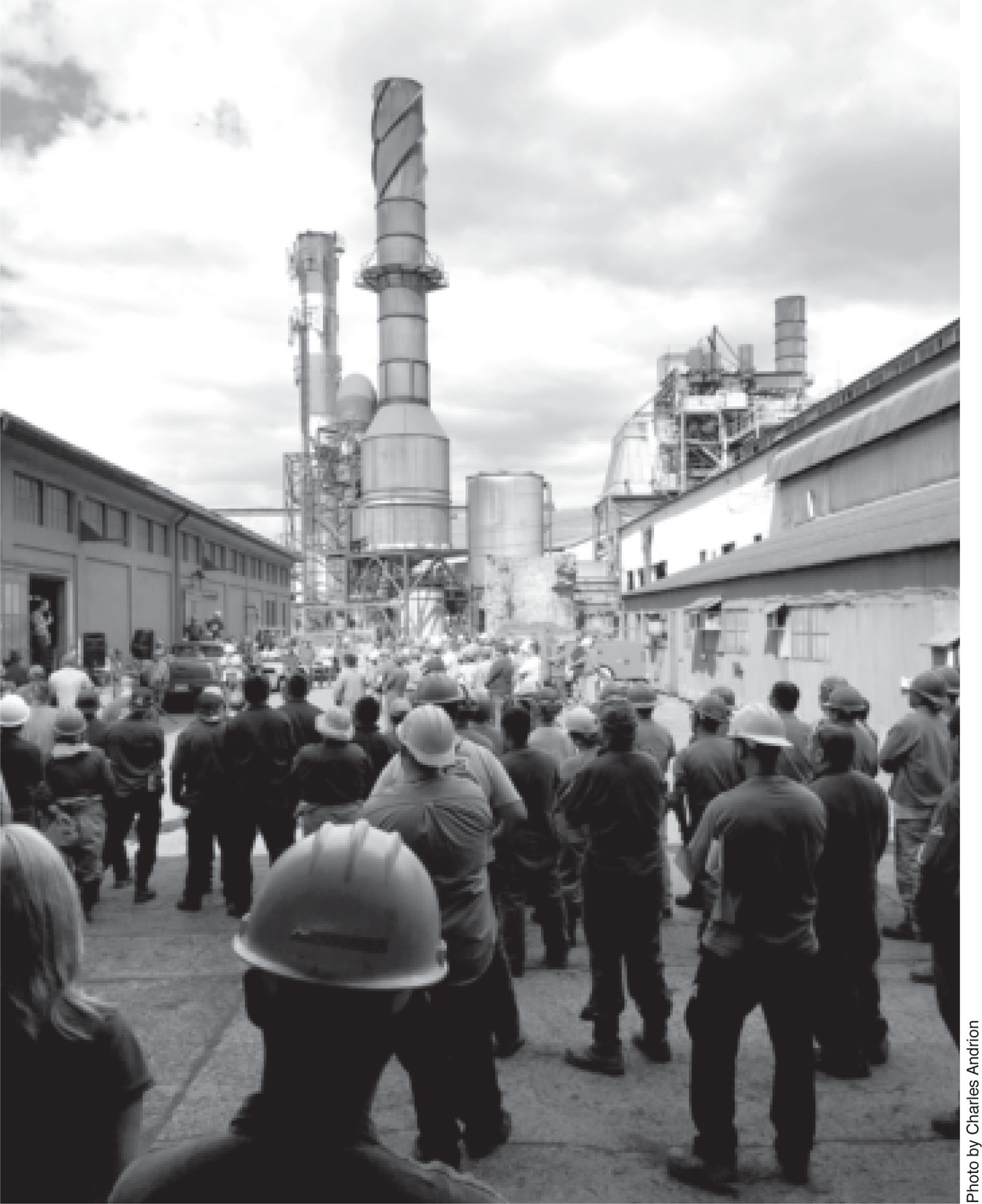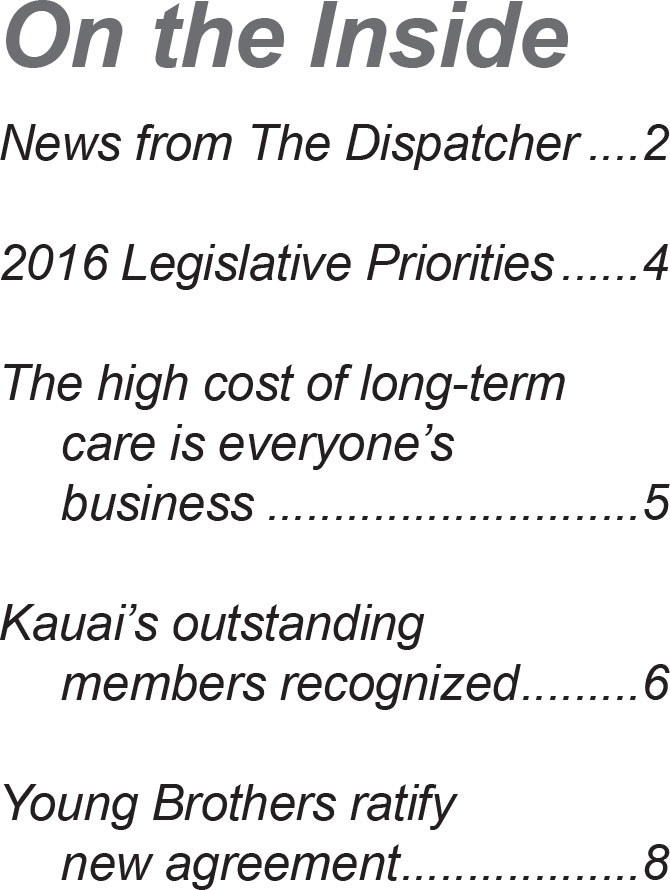PUUNENE, Maui—At its peak, sugar was the number one industry in Hawaii with hundreds of thousands of acres under cultivation on Kauai, Oahu, Maui and Hawaii island. By 2015, only Maui’s Hawaiian Commercial & Sugar Company (HC&S) remained of the industry once called “king,” and by the end of 2016 that last plantation will grind to a halt, ending commercialized sugar in the state.
Shut-down announced affecting 650 ILWU members
“The day began like any other day,” recalled Charles Andrion, a third generation sugar worker at HC&S. “It was the first week of the year and the beginning of the off season, when repairs and refitting of equipment are done. It was business as usual and we were hoping that the harvesting season would start soon.” Just after noon, a company town hall meeting at 1:00 p.m. was announced. Under overcast skies, HC&S workers were given a packet with a letter stating that the company would be phasing out of sugar after the current crop is harvested at the end of the year. The shutdown will affect more than 650 ILWU members.
Citing operating losses of $30 million in 2015 and a forecast of continued losses in the future, the company said that it will stop planting in early March and as many as 90 field workers will lose their jobs. The rest of the workers will lose their jobs throughout the year as their specific responsibilities are completed.
Workers and their families face uncertainty
Andrion has worked as an Instrument Technician since he was accepted into HC&S’s apprenticeship program after graduating from college nine years ago. His grandfather was one of the sakadas who were recruited from the Philippines to work on the plantation in 1946. His grandparents and parents were able to provide for their families with the wages and benefits they received, which were negotiated by the ILWU. Andrion was stunned by the unforeseen announcement by Alexander & Baldwin (A&B), the parent company of HC&S.
During a family discussion at the dinner table the day before the announcement, Andrion’s four-year-old pre-schooler asked if they could sign her up for gymnastic class. “I told her yes, but after the announcement was made, we are not sure if we can afford the tuition,” said Andrion.

Hawaiian Commercial & Sugar Company (HC&S) workers gather under overcast skies at the company town house meeting on January 6, 2016 to receive the announcement that HC&S will be making their last sugar cane harvest this year. More than 650 ILWU members will be losing their jobs when HC&S, the last surviving sugar plantation in Hawaii, shuts down at the end of the year.
Disappointment in the decision to close
Esther Manibog’s father was also a sakada. He met the woman of his dreams—who was working in the HC&S power plant—and married her, putting down roots in Maui. In 1986, Esther began working in the sugar fields like her father. After several years, she was accepted into the apprenticeship program and earned certifications to be an electrician. Manibog has considered applying for jobs outside of HC&S but didn’t because ILWU negotiated wages and benefits provided her enough to pay the mortgage and raise her child, even as a single parent.
Manibog expressed her disappointment regarding A&B’s decision to shut down the operation. She described how the union—Local, Maui Division, and HC&S unit officers—mobilized her fellow HC&S workers and their families and worked hard to educate the community on the economic benefits and the jobs that HC&S provided. “We provided testimony opposing the proposed water reduction from East Maui, because of concerns over the economic impact that reduced water would have on the plantation and jobs,” Esther said.
A lawsuit seeking to end all agricultural burning was filed by the “Stop Cane Burning” group against HC&S last July. “Through a coordinated effort by the union, we gathered more than 6,000 signatures on a petition supporting the current Agricultural Burning Permit and delivered it to the Department of Health,” said Manibog. “Despite all these efforts, A&B made the decision to close.”
An Injury to One is an Injury to All
With the first layoff period fast approaching, the union again mobilized— this time to help the affected workers transition into new jobs, and to deal with the hardships that they will face.
A survey was sent out to the workers immediately after the announcement was made. The survey allows the union to gather information on the affected worker’s needs, so that the appropriate resources are provided b
y the company as well as federal, state and county governments. The workers also updated their contact information to ensure that the union can provide additional information or assistance when needed.
Two open house meetings were held at the ILWU Hall in Wailuku on January 15-16, 2016, to meet the workers face-toface and to answer any questions that they may have. Assistance in completing the survey was available. English and Ilocano speaking members were on hand to make certain that everyone understood what services and programs are available to help them with the transition and layoff. Help will also be provided to laid-off workers applying for unemployment benefits.

—continued on page 3
